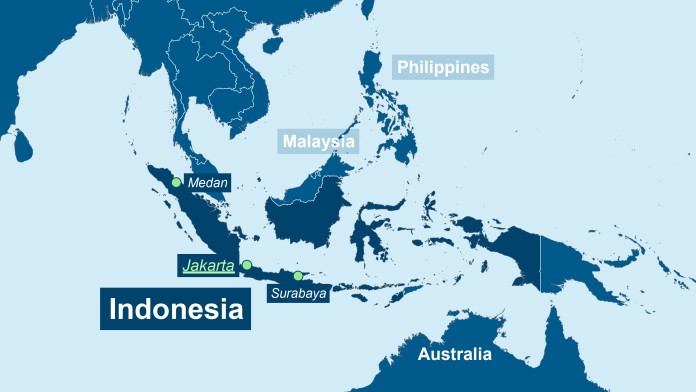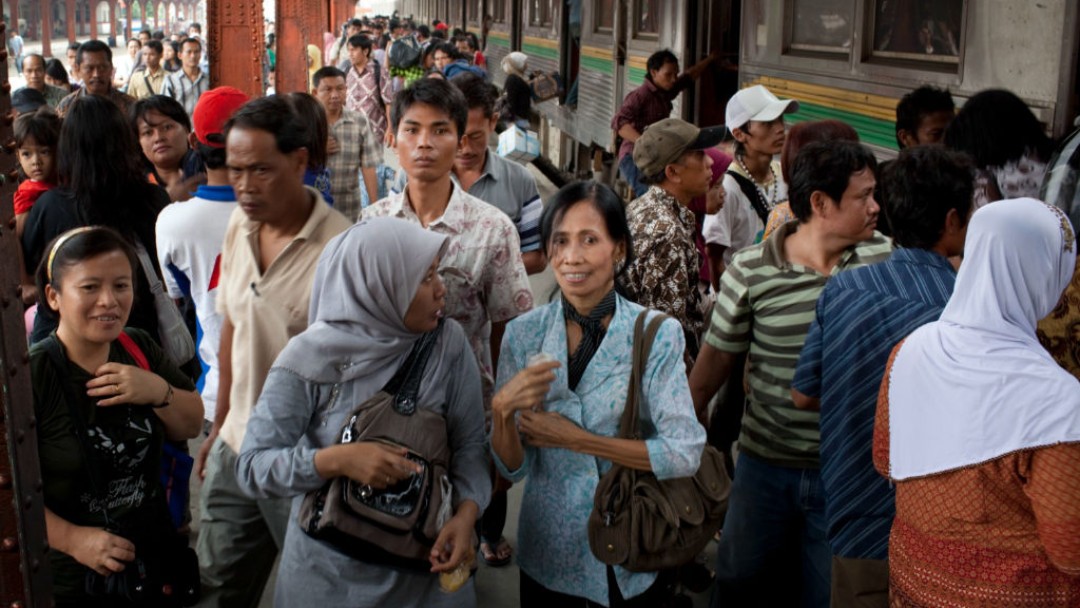
As of: 09/2021
As prosperity grows, so does the number of cars and motorcycles in the metropolitan region of Surabaya in East Java. This is because there are virtually no attractive alternatives for private transport. This is set to change: the expansion of a suburban railway line between Surabaya and Sidoarjo is laying the foundation for reliable and affordable local transport for ten million people. The new suburban railway line will boost mobility in the region. It is energy efficient, contributes to air pollution control and cuts greenhouse gas emissions. The planned suburban railway line is the first step towards sustainable urban mobility.
Close to a quarter of East Java’s population lives in the metropolitan region of Surabaya. The provincial capital of the same name has nearly three million inhabitants, while neighbouring Sidoarjo has two million. The population is growing steadily and the economy is expanding by around five percent annually. Furthermore, with incomes in the region rising, many inhabitants are buying a scooter or – if affordable – a petrol or diesel car. However, they are now often stuck in traffic. The increase in motorised private transport is causing air pollution, noise pollution and the number of accidents to rise as a result. Exposure to particulate matter and nitrogen oxides is leading to more respiratory diseases. Not only that, but greenhouse gas emissions are increasing.
The economy and population are also expected to grow at a similar rate for the next 15 years. In other words, the problems in the transport sector will only intensify unless something is done.
Public transport in the region currently accounts for only around five percent of all journeys. The means that are currently available are inadequate and the links are poor. The Indonesian government has therefore selected this region as one of six metropolises in which urban mobility is set to become more sustainable.

Modernising urban mobility is a priority for Indonesia. This is being supported by the German-Indonesian Green Infrastructure Initiative. With the support of Germany, a sustainable urban transport development plan has already been drafted for the region, which provides for the development of a functioning, attractive public transport system in the medium term. The construction of the new suburban railway line, which will connect Surabaya with Sidoarjo, is the first step in implementing the transport development plan.
KfW is supporting the building project with up to EUR 230 million on behalf of the German Federal Government. This will initially finance the construction of a 22-kilometre line with five suburban railway stations and electrify the railway. Previously, diesel locomotives powered the trains. The construction project includes all railway technology, such as signals and IT communication as well as ticket machines. A custody account and workshop for maintenance will also be set up. In addition, the ongoing expansion of the suburban railway network is being prepared. To achieve this, questions concerning land law must also be clarified. Since the line runs through a densely populated area, socially affordable resettlements are planned.
The building of the new suburban railway line is a signal that a mobility transition is now underway. The construction of a public transport system is gradually taking shape. The new line connects the two most important cities in the metropolitan region, making public transport significantly more attractive. Journeys remain affordable. In the first year after the inauguration of the new line, up to 1.5 million people will initially be able to benefit directly from it, with up to 2.5 million people following further expansion.
Air quality in the region will significantly improve, reducing the number of respiratory diseases. Fewer greenhouse gases will be emitted than in a scenario where a suburban railway is not built. In conjunction with an extended expansion of local public transport, up to 250,000 tonnes of carbon dioxide equivalents will be saved annually in the long term.
The project contributes to the achievement of these following United Nations Sustainable Development Goals:
KfW Group
KfW Development Bank
Jakarta office/Indonesia
Share page
To share the content of this page with your network, click on one of the icons below.
Note on data protection: When you share content, your personal data is transferred to the selected network.
Data protection
Alternatively, you can also copy the short link: https://www.kfw-entwicklungsbank.de/s/enzBy4za
Copy link Link copied